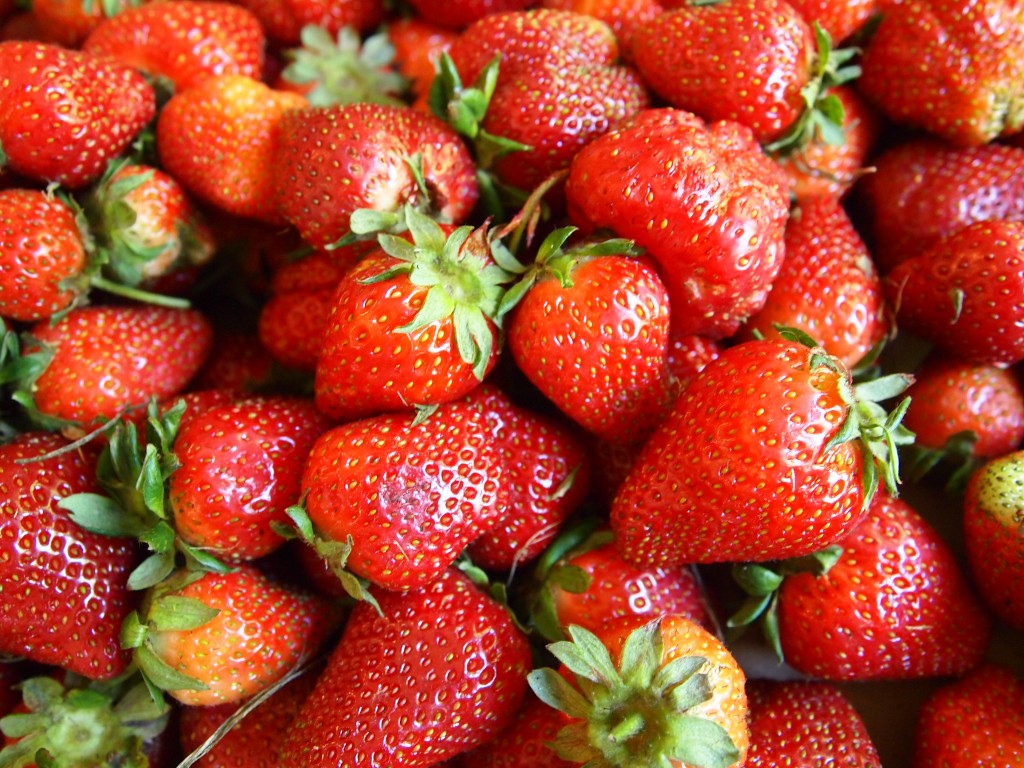
Healthy Tips for Thickening Sauces, Gravies, Dressings, and Desserts
There are many choices when it comes to choosing a thickener in order to create a creamy sauce, salad dressing, gravy, or dessert. Most often, we use high-calorie fats such as oils, butter, or cream to achieve a smooth and creamy texture. Instead of these high calories choices that can negatively impact your health, there is a myriad of natural and functional alternatives that not only enhance the quality of your recipes, but also have health-promoting benefits.
Choosing functional foods and functional ingredients allows us to make the most positive impact on our health.
What Are Functional Foods?
Functional foods are any food or ingredient that may provide a health benefit beyond the traditional nutrients it contains. They include bioactive ingredients that can have an impact on our health. Some examples are probiotics, prebiotics, plant bioactives, dietary fiber, antioxidants, functional starches, vitamins, and minerals.
Functional Thickeners
There are a whole host of “functional ingredients,” a term that refers to food items that thicken, stabilize, and enhance recipes to create a specific texture, appearance, or nutritional impact that can replace high fat oils and creams in many of your favorite recipes. These include functional starches and gums, which also create a smooth mouth feel and give a creamy texture to sauces, gravies, soups, salad dressings, and desserts. Many of these functional thickeners are used in our delicious, health-promoting Ornish Kitchen recipes. (See Sample Menu) Choosing functional foods and functional ingredients allows us to not only enhance the quality of our food, but also make the most positive impact on our health.
Meet the Starches
Starches are long-chain molecules present in all green plants and stored as microscopic granules throughout the plant structure. Basically, they are the cells of a plant. The starches most commonly used as thickeners are extracted from grains such as corn, wheat, or rice and root vegetables such as potato, cassava, and arrowroot. Cornstarch, tapioca, and flour are the most commonly used starches, but other alternative starches such as arrowroot and kuzu actually offer more nutritional density, have some medicinal properties, and provide a smooth finish to a recipe. Starch thickeners don’t add much flavor to a dish, but some can impart a starchy flavor if they’re undercooked. The most neutral tasting of the starch thickeners is arrowroot, kuzu, or sweet rice flour.
Kuzu (Kudzu)
For thousands of years, the Chinese and Japanese have cooked with Kuzu, which comes from the roots of the Kuzu or Kudzu plant, because of its medicinal properties.
Culinary Benefits: Kuzu works as an exceptional thickener like cornstarch, but it is unprocessed and makes a stronger jell. It produces bright, translucent sauces, adds a shiny gloss to soups, and provides a smooth texture for sauces and gravies with no starchy taste. Kuzu comes in small chunks. To thicken a liquid, crush the chunks into a powder, mix them with an equal amount of cold water, and then stir the mixture into the hot liquid and simmer for a few minutes until the sauce is thickened.
Health Benefits: It has a very high concentration of health-promoting phytochemicals, including flavonoids, which are responsible for its medicinal benefits on the circulatory and digestive systems. The high concentrations of isoflavones in kuzu extract have been studied and shown to reduce alcohol intake for heavy problem drinkers by reducing craving. According to WebMD, Kuzu is also used for a variety of heart, circulatory and digestive issues along with treating conditions such as diabetes.
Sweet Rice Flour
Culinary Benefits: Sweet rice flour is a superb thickener milled from glutinous short grain rice (aka “sticky rice”), which provides exceptional binding qualities and makes it an efficient thickening agent. It also produces a clean finish to recipes without the grainy, starchy qualities of some starch thickeners. Don’t let the words glutinous and sweet rice mislead you. Glutinous simply means “having the nature of glue,” making it a great binder. It has a very mild, neutral, slightly milky type taste that is not too sweet. It’s a great gluten-free flour for baking because of its high starch content, especially when you’re not using fat in baked goods. It also has the advantage of remaining stable when frozen, so great for recipes that will be frozen.
Health Benefits: A great gluten-free and low-allergen choice. It is high in thiamin and provides a good source of other B vitamins.
Arrowroot
Culinary Benefits: Arrowroot is an easily digestible, flavorless starch extracted from roots known as rhizomes. The arrowroot plant grows in tropical zones, and the root stalks are typically dried and then ground into a very fine powder. It can be used to thicken sauces, soups, desserts, fruit sauces, and other cooked food. It produces a clear, thickened sauce that will not go cloudy like cornstarch, flour, and other starchy thickeners. It thickens at a lower temperature than cornstarch or flour and works well with simmering and prolonged cooking. It also tolerates freezing and dissolves well at low temperatures, and can be mixed with acidic ingredients such as citrus. Arrowroot imparts a clear, glossy finish and does not produce that chalky flavor that occurs with some thickeners if they are undercooked. It is often used in Asian cooking to thicken sweet and sour sauces. As with most starchy thickeners, it should be mixed into a slurry with an equal amount of cold water first before adding it to the hot liquid to prevent clumping. Some chefs suggest whisking ¼ cup water with two tablespoons arrowroot to make a slurry before adding it to sauce. If substituting arrowroot for cornstarch, there is a 1:1 ratio.
Health Benefits: Arrowroot has been used medicinally by ancient Mayans as a remedy to poison-tipped arrows. It is regarded as a nourishing starch used to calm stomach and digestive issues such as nausea and diarrhea. It is a great gluten-free option and can be used to replace wheat flour in some baking.
Cornstarch
Culinary Benefits: This is a dense powder that is derived from the endosperm of the corn kernel. Cornstarch has almost twice the thickening power of flour. It is used to thicken sauces, gravies, and puddings. Like other starch thickeners, cornstarch should be mixed into a slurry with an equal amount of cold water before it’s added to the hot liquid that you are thickening. Use one tablespoon to thicken one cup of liquid. Simmer the liquid, stirring constantly, for a minute or so until it thickens. Cornstarch does not mix well with acidic ingredients and breaks down with prolonged cooking or when frozen and thawed.
Health Benefits: Cornstarch can be a gluten-free option, but not all cornstarch is gluten-free if manufactured in the same facility as gluten flours or products. If you are looking for a gluten-free cornstarch, you will need to check if it is certified gluten-free. You may also consider looking for brands that use non-GMO ingredients, such as the brand, Rumford, which is also gluten-free.
Tapioca
Culinary benefits: Tapioca, which is extracted from the yucca (cassava root), is a common thickener used in puddings and pies. It can also be used to thicken sauces, soups, and fruit fillings and glazes. It thickens at a lower temperature than cornstarch, remains stable when frozen, and imparts a glossy sheen. Instant tapioca doesn’t dissolve completely and leaves small gelatinous balls in the liquid. If you want to avoid the small balls, make sure to use tapioca starch, which is finely ground so that it dissolves completely. Tapioca flour is very smooth, which makes for a great thickener in sauces, soups and desserts since it doesn’t leave any discernible color or taste. It does not coagulate or separate when refrigerated or frozen. It can be used to replace cornstarch by using two tablespoons of tapioca flour for each tablespoon of cornstarch.
Health Benefits: Tapioca is rich in fiber and provides several B vitamins including pantothenic acid, folate and B6, vitamin K, as well as iron, calcium, manganese, selenium and copper.
Meet the Gums
Gums are primarily complex carbohydrates derived from plants, algae, and microorganisms that possess thickening, gelling, and stabilizing properties. They are fat-free and make an excellent thickener for creating fat-free salad dressings, sauces, and desserts. They offer a smooth texture and creamy mouth feel. Gums are often lower in calories than most starches such as cornstarch and flours. They are many different natural gums such as agar, xantham, carrageenan, guar, locust bean gum and tragacanth, and sodium alginate. We will highlight a few of the top gums often used by the Ornish chefs to thicken dressing, sauces, and outstanding fat free desserts.
Agar
Culinary Benefits: Agar is often referred to as a vegetarian gelatin because it is extracted from seaweed, although it is tasteless. It can be used to substitute gelatin as a setting agent, but has up to five times stronger setting properties than gelatin, and forms at lower concentrations, so less is needed. It does not dissolve as quickly as regular gelatin; however, it will set at room temperature unlike gelatin. It will not melt when warmed and be can be served hot. It is sold in both flake and powdered forms and can be found in health food stores or on the health food aisle of some standard grocery stores. Agar also has firmer mouth feel than gelatin, but has a smooth finish. It can be used as an excellent fat-free vegan thickener and stabilizer in a variety of other plant-based recipes such as sauces, custards, and puddings.
Health Benefits: Agar has all the rich nutrients of seaweed. It’s rich in iron, calcium, and iodine, along with other vitamins and minerals. With the excellent binding capacity and ability to form a gel, it acts as a bulking agent and can assist with healthy digestion, blood sugar and weight management. It also has been touted for its anti-inflammatory properties.
Xantham Gum
Culinary Benefits: Considered one of the most versatile and easy-to-use thickeners, xantham gum can be used in hot or cold applications and does not need to be heated like most starches. It’s ideal for salad dressings and cold sauces such as a fruit sauce. It is stable with temperature variations and freezes and thaws well. It can sustain acid, alkaline, and salty solutions, and is a powerful thickening agent even in small quantities. Xantham acts as an excellent thickener, emulsifier, and stabilizer that well integrates with many other ingredients. It produces a rich mouth feel that makes it excellent for fat-free salad dressings.
Health Benefits: Xantham is an indigestible polysaccharide (a string of multiple sugars) produced by bacterial fermentation primarily derived from corn. If you have food allergies, be aware that it could also be derived from wheat or soy. Certified brands such as Bob’s Red Mill are gluten-free. Xantham is very high in fiber with eight grams of fiber per tablespoon with only 35 calories. Similar to agar, xantham gum has been shown to aid in digestive health due to its ability to form a gel and create bulk that stimulates the digestive tract and eases elimination. The same mechanism of slowing absorption has also been shown to slow down the release of blood sugars, supporting blood sugar management for those with diabetes. In one study, ingesting xantham gum at higher doses than the approved recommended intake, showed a 10% reduction in cholesterol without any adverse dietary symptoms. Be sure to also check our Ornish Living article, Transform Your Salad Dressing, for additional tips on thickening salad dressings without added fat.
What is your favorite plant-based thickener? I would love to hear your experience and culinary tips on transforming your plant-based recipes.







